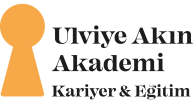READING SYSTEMS

Reading systems are various methods and techniques designed to improve individuals’ reading skills. These systems provide personalized education by taking into account individual differences and aim to achieve superior success in the field of reading. Here is a detailed explanation of reading systems and their functions:
What are Reading Systems?
Reading systems are methods developed to improve individuals’ reading speed, reading comprehension skills and general reading skills. These systems are designed to suit individuals’ different learning styles and needs and are implemented internationally. Dr. Ulviye Akın aims to maximize individuals’ reading skills by using scientific reading methods and common reading systems, various strategies and technologies in the programs she designs.
Basic Reading Systems and Their Functions
- Phonic (Sound-Based) System:
- Definition: It is a method that develops reading skills by teaching the connections between letters and their sounds.
- Function: It allows children to understand letter-sound relationships and thus helps them read words more easily.
- Example: Programs such as “Jolly Phonics” or “Hooked on Phonics”.
- Visual System:
- Definition: Teaches words and sentences by associating them with visual clues and pictures.
- Function: Facilitates the recognition and recall of words using visual memory.
- Example: Flash cards, picture books, and graphic organizers.
- Language and Meaning-Focused System:
- Definition: Teaches reading through meaningful language and texts, emphasizes the meaning and use of words.
- Function: Teaches understanding the meaning of words and sentences in context, improves reading comprehension skills.
- Example: “Whole Language” approach, “Balanced Literacy” programs.
- Speed Reading Systems:
- Definition: Techniques and strategies developed to increase the reading speed of individuals.
- Function: Increases reading speed by optimizing eye movements and increasing the ability to recognize word groups.
- Example: “Evelyn Wood Speed Reading” program, digital applications such as “Spreeder”.
- Active Reading and Comprehension Systems:
- Definition: Strategies used to develop deeper and more effective understanding while reading.
- Function: Teaches how to analyze text, identify main ideas and details, and think critically.
- Example: “SQ3R” (Survey, Question, Read, Recite, Review) method, “Reciprocal Teaching” technique.
- Digital and Technological Systems:
- Definition: Interactive programs and tools that develop reading skills using technology.
- Function: Provides a personalized reading experience through computers, tablets, and smartphones. Provides feedback and assessment.
- Example: “Raz-Kids,” “ABCmouse,” “Reading Eggs.”
Characteristics of International Reading Systems
- Comprehensive and Diverse Approaches: Reading systems address different learning styles and needs. They include a variety of approaches, including phonics, visual, meaning-oriented, and digital systems.
- Individualized Education: Provides programs tailored to individuals’ abilities and needs. Tracks personal progress and provides individual support when needed.
- Use of Technology: Reading education is made more accessible and interactive by using digital tools and platforms. This is particularly effective for engaging children and increasing their motivation.
- Feedback and Evaluation: By providing regular feedback and evaluation during the learning process, students’ progress is monitored and adjusted according to their needs.
Conclusion
Dr. Ulviye Akın synthesizes various elements from reading systems eclectically in the programs she designs, and aims to achieve superior success by using various strategies and techniques to improve individuals’ reading skills. These systems increase individuals’ reading speed, reading comprehension and general reading skills. Various approaches such as phonics, visual, meaning-oriented, speed reading and digital systems provide education that suits individuals’ needs and take them to the best level in reading. These systems are internationally accepted and implemented, and are effective in maximizing individuals’ reading skills.
